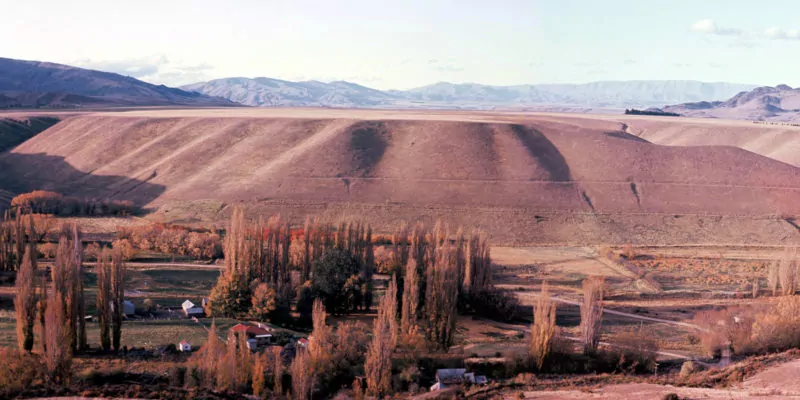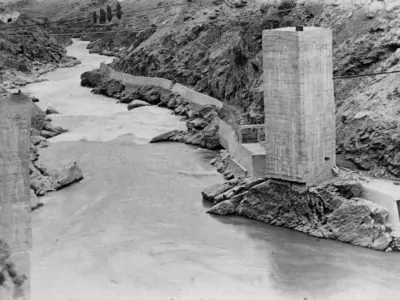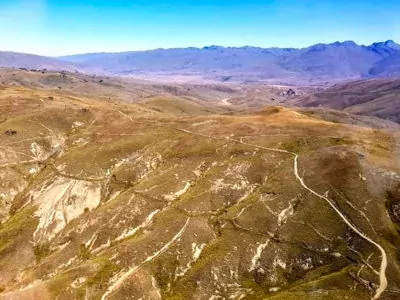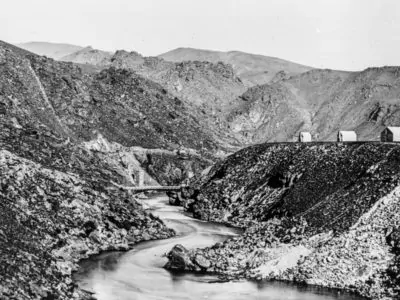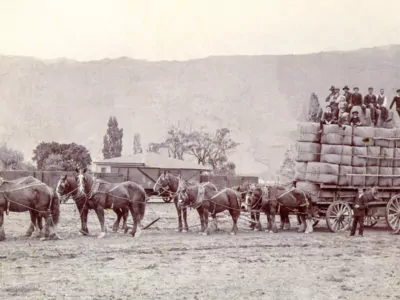Water is essential for all life; without it we would not exist. Central Otago receives an average rainfall of 300mm a year. Some falling as snow on the mountains.
This slowly melts and feeds into creeks and aquifers (underground streams). These flow into the two major rivers which pass through the area eventually to the sea.
Starting in the 1860’s many of the creeks had water races dug from them to divert water to other areas.
These were dug by teams of men and the water diverted to areas of gold mining, farms or for domestic purposes. Some of the water races were many kilometres long.
One of the earliest water races was dug to take water from the Lowburn Creek to the mining area in the Kawarau Gorge.
Other water races were dug diverting water from the Lowburn and Stratford creeks to other parts of the Lowburn Valley.
Today evidence of some of these very early water races can still be clearly seen in the Lowburn Valley.
At the junction of Lowburn Valley, Heaney, and Swann Rds. look north, lines can be seen going round the face of the hill. The upper two are abandoned water races dug to take water into Gilby, Kelly, Burchill, and Chinaman Gullies.
To the south, from this viewpoint, there is evidence of two more recent water races, top, the Westmoreland (for more details see below), and the lower one taking water to the bottom of the Lowburn Valley for farming purposes.
The 1999 floods in the Lowburn Valley caused major damage to sections of these water races and both are now abandoned.
The Westmoreland water race took water from the Parkburn Creek on Mount Pisa, approximately 10 km north of Cromwell, near the current Pisa Moorings.
The water was taken along the mountain in a water race, crossing several creeks, including the Lowburn, in large open pipes known as fluming.
The race then went down the Lowburn Valley and round the hills to Cromwell, approximately 18 km.
The water initially used for mining. Along the way some was diverted for farming and domestic use.
When the water was no longer needed for mining it was used solely for farming and domestic use.


